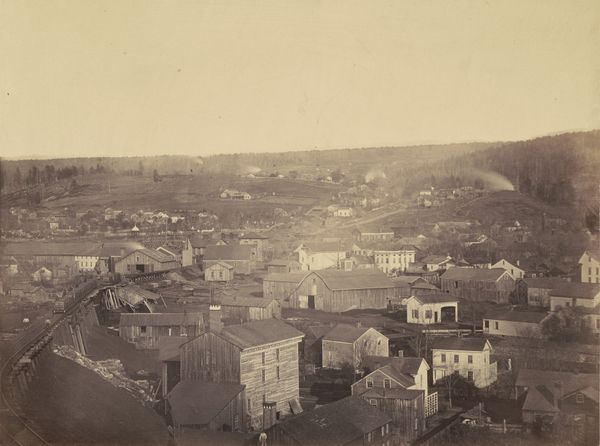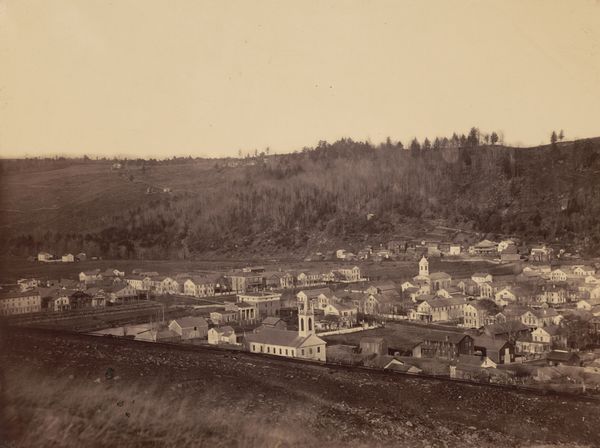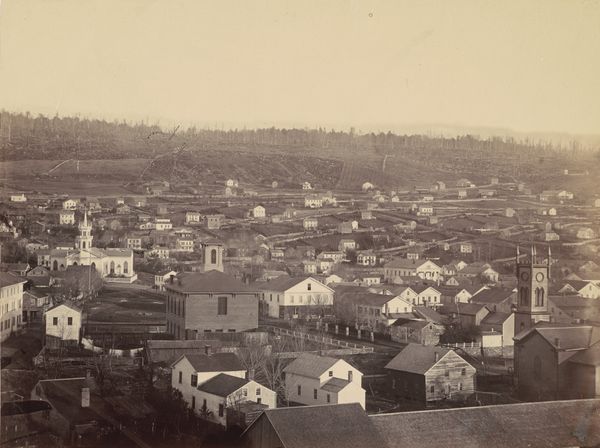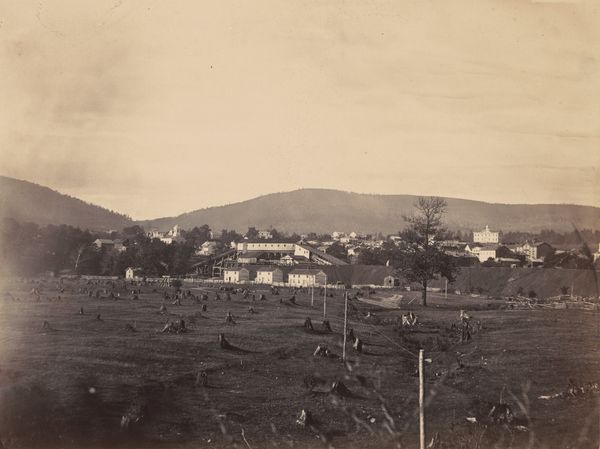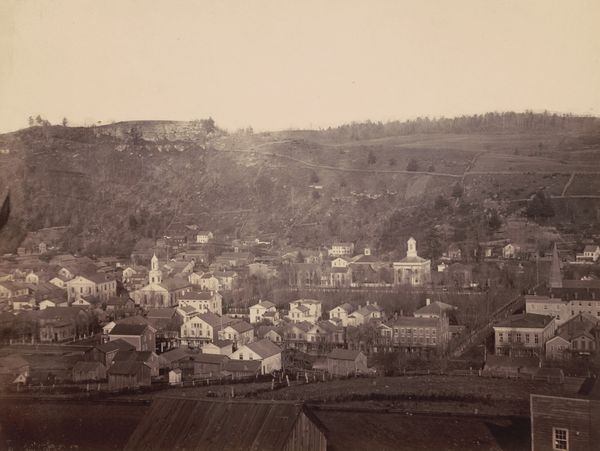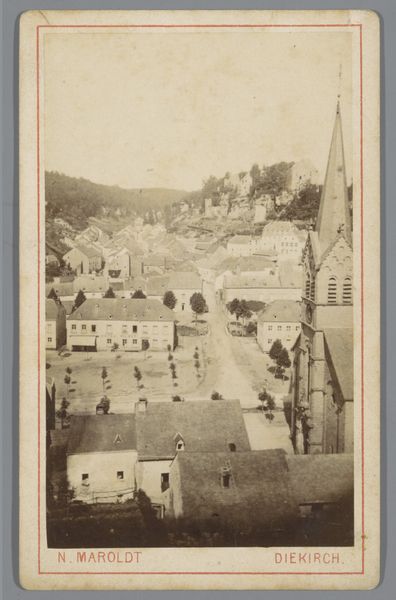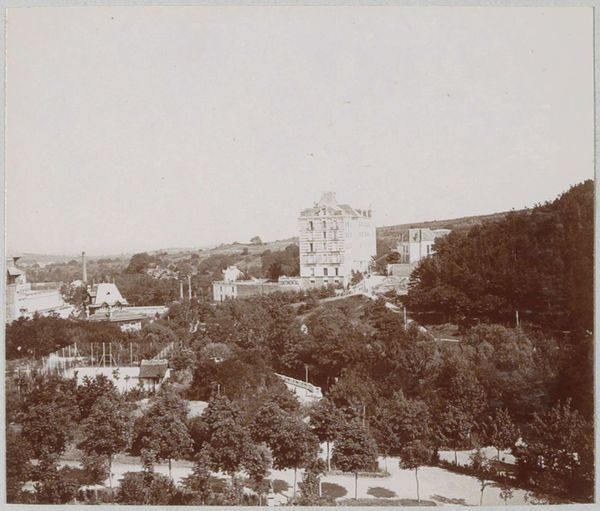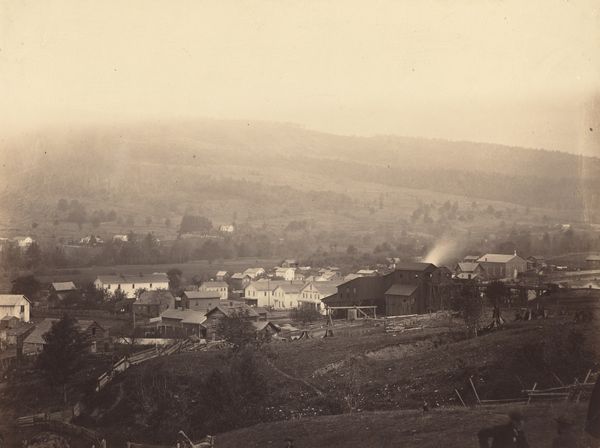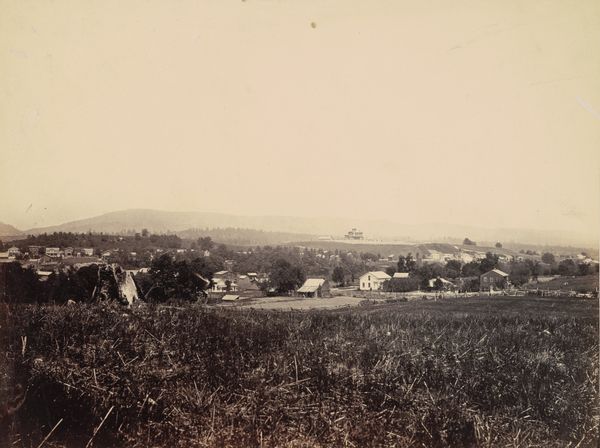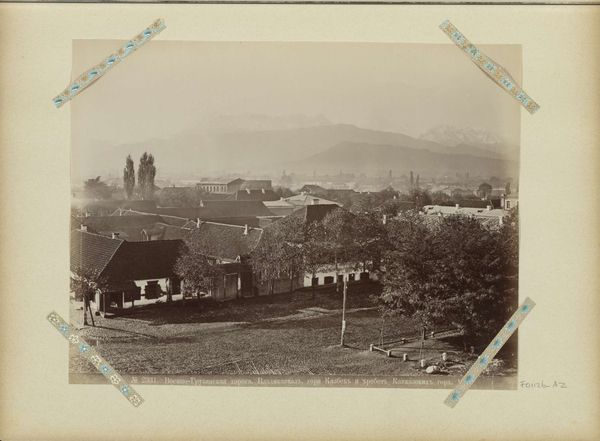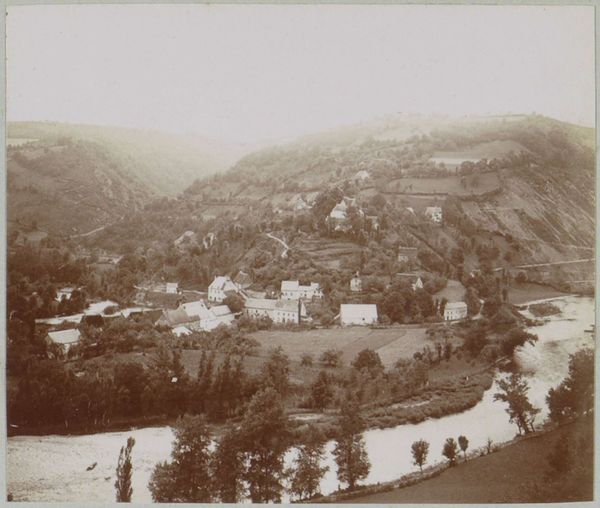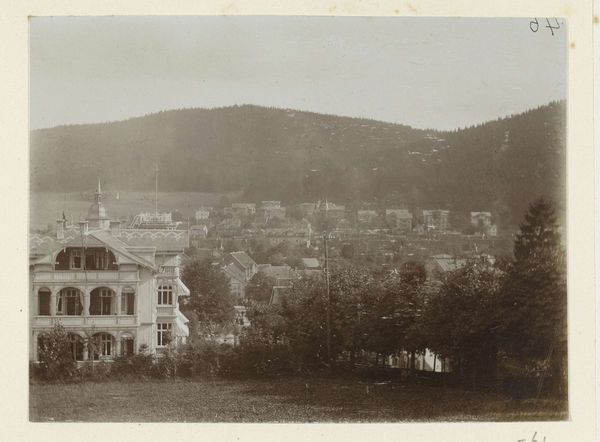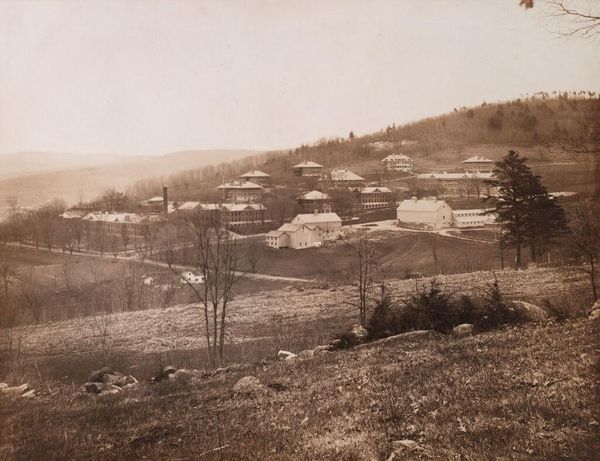
#
toned paper
#
photo restoration
#
charcoal drawing
#
charcoal art
#
unrealistic statue
#
old-timey
#
19th century
#
watercolor
#
historical font
#
statue
Dimensions: image/sheet: 5.5 × 9 cm (2 3/16 × 3 9/16 in.) mount: 6.1 × 10.1 cm (2 3/8 × 4 in.)
Copyright: National Gallery of Art: CC0 1.0
Curator: My first impression is of a dream… or a very sepia-toned memory. This aerial perspective… is it comforting or slightly isolating, do you think? Editor: Isolation definitely factors in. We're looking at "Town Scene," circa 1860, by George H. Wood, likely rendered in charcoal and watercolor on toned paper. It gives a bird's-eye view, yes, but what's being observed? Who are these inhabitants? The large building near the summit – is it a school, a hospital, or an almshouse overseeing everyone below? Curator: Ah, always seeing power dynamics! I just get the sense that this is… the ultimate dollhouse. All those tiny lives, perfectly arranged on a hillside, with that formidable, almost gothic-looking structure looming large over them. Editor: Well, this image coincides with heightened debates around social reform in America, not least with the expansion of state institutions. Given the time frame, the very style of image production contributes to how landscapes were consumed as evidence and knowledge, with everything neatly visible to the viewer. The aerial view makes all activities and residents more accessible to outside evaluation. I find myself wondering what we don’t see – the labor, exploitation, or lack of individual agency necessary to uphold this community? Curator: You bring up really great points, of course! Though, maybe Wood's playing with that expectation? The lack of details—it's a feeling more than a factual account, perhaps. He’s inviting us to romanticize a little. Editor: A seductive invitation, given the complexities of the moment. By leaving spaces unmarked and un-peopled, does Wood mean to imply that its progress benefits everyone? Or is this silence masking specific power structures operating beneath the surface of town life? It really highlights art's potential both to reflect reality and to obscure certain truths. Curator: Hmm. That's a lot to pack into some charcoal and watercolor. Perhaps it also serves as a reminder that our past is never quite as clear-cut— or quite as pretty—as it seems? Editor: Exactly. It prompts us to engage with the tensions between appearance and reality. It's up to us, finally, to keep seeking multiple angles of interpretation for a richer understanding.
Comments
No comments
Be the first to comment and join the conversation on the ultimate creative platform.
